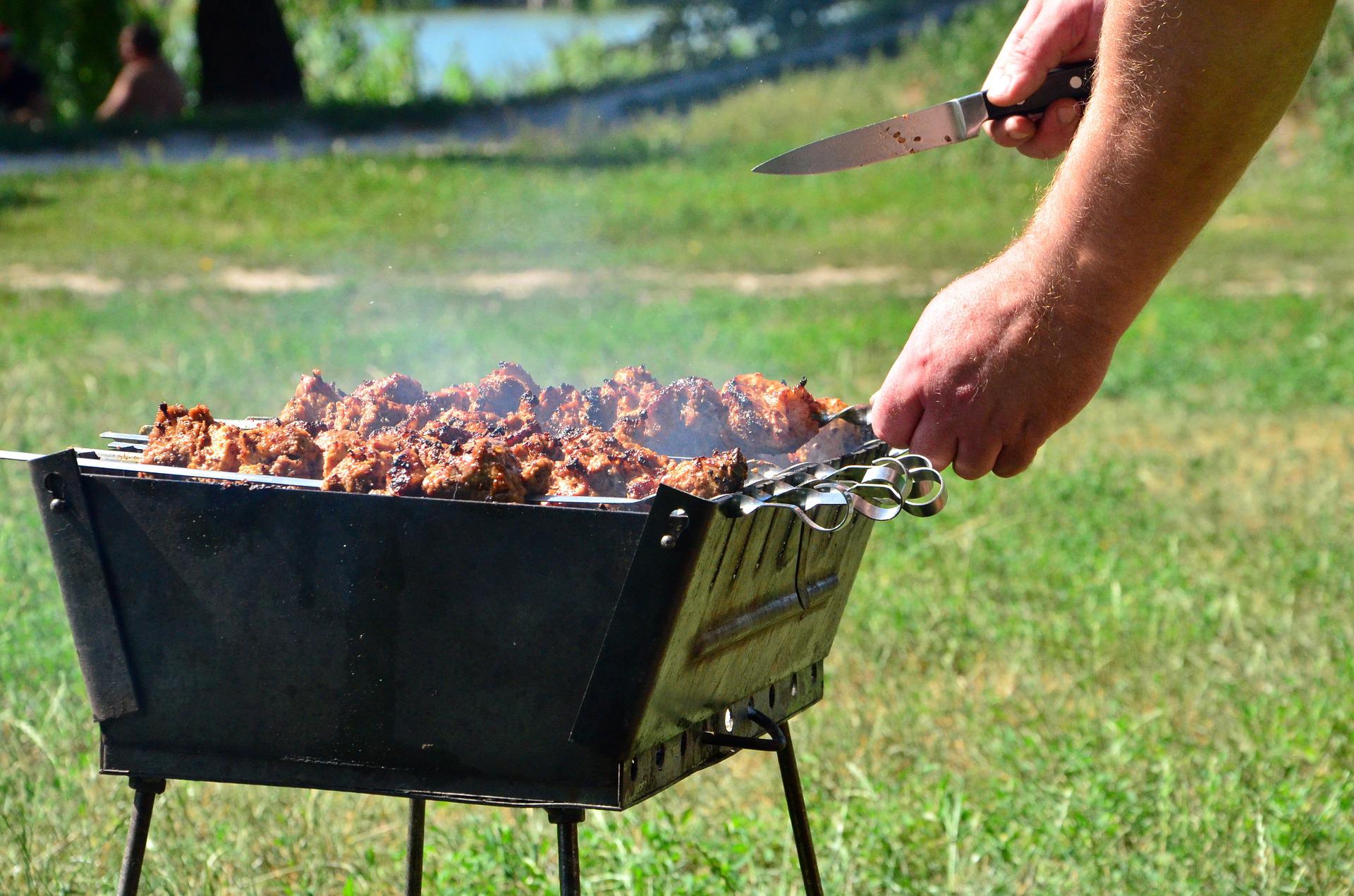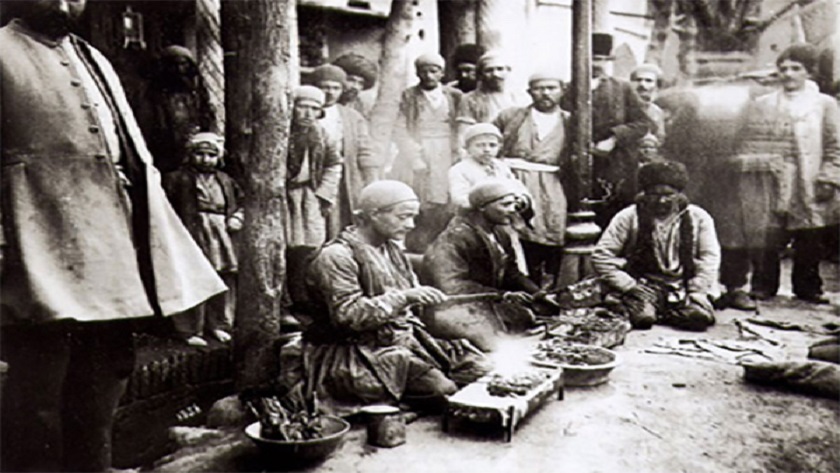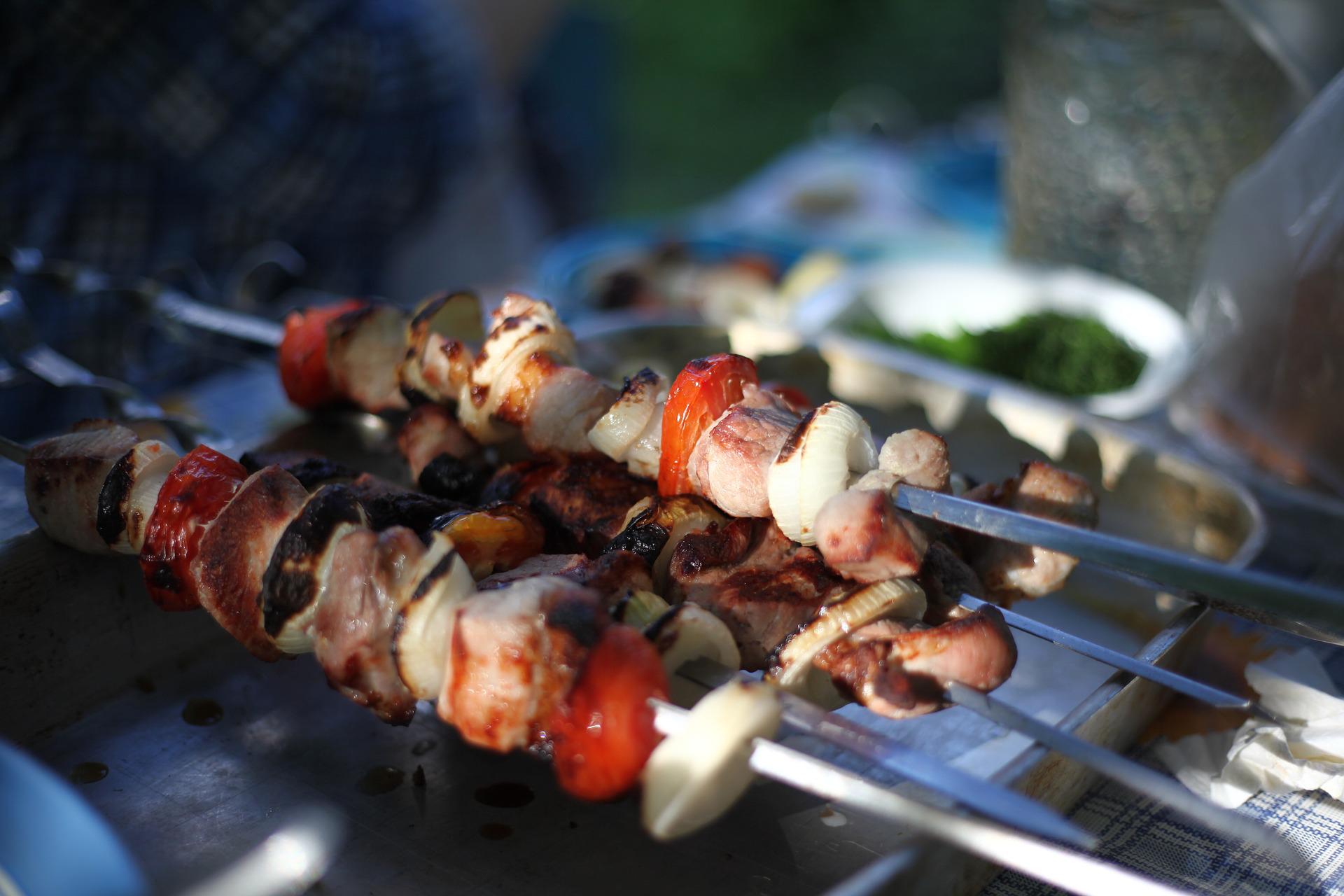Do you know that every July 14th is Kebab Day? Though often thought of as a modern dish, kebabs have a long and storied history. Whether grilled, roasted, or cooked in a sauce, kebabs are a delicious and easy way to enjoy meat and vegetables. The history of this dish is as rich and flavorful as the kebabs themselves!

Kebabs are a type of food that originated in the Middle East. They typically consist of meat that is cooked on a skewer, although there are vegetarian versions as well. Kebabs are typically cooked on a skewer over an open flame, giving them a delicious smoky flavor. They can also be cooked in a pan or oven. Kebabs can be served with a variety of accompaniments, including rice, salad, and bread. Kebabs make a delicious and easy meal that is perfect for sharing with friends and family.
Kebabs were first mentioned in texts from the 9th century AD, and they were likely invented even earlier. The dish is thought to have originated in the Persian Empire, where it was popular street food. The word "kebab" is thought to derive from the Persian word "kabab", which means "to fry" or "to roast". Kebabs are believed to have originated in the medieval Persian city of Samarkand, where they were originally made with lamb meat.

The dish quickly spread throughout the Middle East and Central Asia, becoming a staple of Ottoman cuisine. In the centuries that followed, kebabs remained a popular dish, as they could be cooked over an open fire and did not require any special equipment or ingredients.
In the late 18th century, kebabs made their way to India, where they quickly became a popular street food. It became an important meal of Indian royalty. Although India was not a birthplace of kebabs, it had territories that depended on wild game such as wild boar or deer and the first dish that was similar to a kebab is called Soola.
.jpg)
Kebabs were also introduced to Europe in the 19th century by Turkish immigrants. In 1969 Germany, kebabs were introduced when Nevzat Salim and his father started selling Iskender Kebap in Reutlingen. In 1972, a famous Turkish Gasterbeiter Kadir Nurman food stall sold fast-food doner kebap in Berlin Zoo. The kebap being sold in Berlin contained only meat, onions, and a side salad.
By the mid-20th century, the kebab eventually made its way to far-flung locales, including Europe and Australia.

The first kebabs in America were introduced by Lebanese immigrants in the late 19th century. The kebab went through a transformation, the chunks of meat became bigger so grilling kebabs became a longer and more laborious process. Soon backyard kebabs became all the rage in the 1960s, when Greece became a favorite tourist destination for Americans.
Today, kebabs are enjoyed by people of all cultures and religions. They can be made with a variety of meats, including lamb, chicken, beef, and fish. Kebabs can also be vegetarian, and they are often served with rice or bread.
There are many different types of kebabs, each with their own unique history and flavor. Here are just a few of the most popular types of kebabs:
1. Adana Kebab: This type of kebab is made with ground lamb or beef, and is typically spiced with red pepper, cumin, and garlic. It originated in the city of Adana in Turkey, and is now one of the most popular kebabs around the world. Interestingly, adana kebab has been deemed to be the second-best (first place was pizza Margherita) traditional dish in the world after receiving more than 60,000 votes in The TasteAtlast list.
2. Chicken Kebab: Chicken kebabs are made with, you guessed it, chicken! They’re usually marinated in spices like cumin, paprika, and garlic before being grilled or roasted. Chicken kebabs are popular in many Middle Eastern and South Asian countries.
3. Seekh Kebab: Seekh kebabs are long, cylindrical kebabs made with ground meat (usually lamb or beef) that has been mixed with spices and herbs. They’re popular in India and Pakistan, and are often served with chutney or mint yogurt sauce.

4. Shish Kebab: Shish kebabs are probably the most well-known type of kebab in the Western world. They’re made by skewering meat (usually lamb, chicken, or beef) and vegetables on a metal or wooden skewer, and then grilling or roasting them. Shish kebabs are popular in many different countries, including Turkey, Greece, and the Middle East.
5. Koobideh Kebab: Koobideh kebabs are another type of ground meat kebab, typically made with lamb or beef. They’re popular in Iran and other Persian Gulf countries, and are often served with rice or bread.

6. Jujeh Kebab: Jujeh kebabs are skewered chicken kebabs that originated in Iran. They’re typically marinated in lemon juice, saffron, and garlic before being grilled or roasted.
7. Souvlaki: Souvlaki is a type of Greek kebab made with pork, chicken, or lamb that has been marinated in olive oil and spices. It’s usually served on a pita bread with vegetables and tzatziki sauce.

8. Kofta Kebab: Kofta kebabs are another type of ground meat kebab, typically made with lamb or beef. They’re popular in many Middle Eastern and South Asian countries, and are often served with rice or bread.
9. Doner Kebab: Doner kebabs are a type of Turkish kebab made with lamb or beef that has been cooked on a rotating spit. It’s then thinly sliced and served on a plate or in a pita bread with vegetables and yogurt sauce.

10. Lahmacun: Lahmacun is a type of Turkish flatbread that is topped with a spiced meat mixture (usually lamb or beef) and vegetables. It’s then rolled up and eaten like a burrito or wrap.
11. Fish Kebab: Mahi Kebab or barbecued fish is popular in both northern and southern Iran, particularly in the Caspian sea and the Persian Gulf regions. However white fish (Caspian Kutum) from the Caspian Sea is among the preferred type for the dish.

Vegetarian kebabs are also becoming increasingly popular as more people adopt plant-based diets. Interestingly, a book entitled Just Kebabs a Celebration of 365 Days & One for a Leap Year has listed 120 vegetarian kebabs! Arlene®, a plant-based food brand has also created different flavors of vegan kebabs (classic, spicy, and pistachio) that are as just nutritious and delicious as its meat version.
This article has given you a brief overview of the history of kebabs, from their origins in the Middle East to their spread throughout the world. Whether you enjoy eating kebabs or simply want to learn more about them, we hope this blog article has been informative and enjoyable. Thanks for reading!